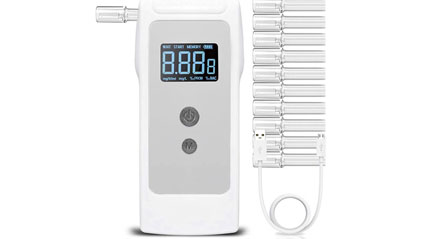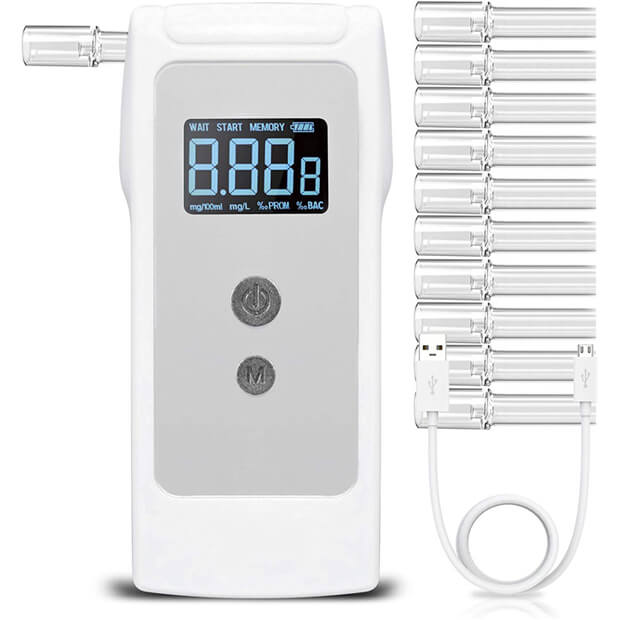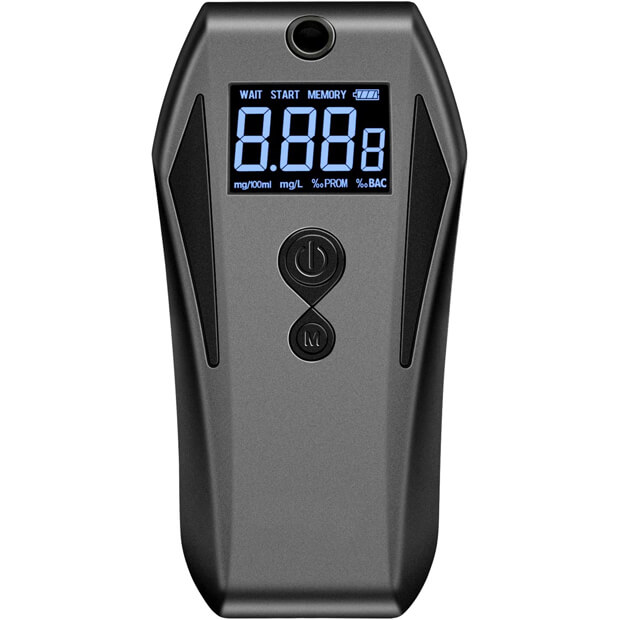Portable Alcohol Monitoring Device: Top Features

What is a breathalyzer?
Firstly, a portable alcohol monitoring device is a measuring instrument (FTA) designed to measure either the concentration of alcohol in human exhaled air or the concentration of alcohol in human blood (through exhaled air). If the error of the breathalyzer is normalized, it is subject to metrological verification and can be used for official procedures for the examination of alcohol intoxication.

Secondly, the first breathalyzers appeared in the early 1930s in the United States, and could only show the presence of alcohol in the blood. Breathalyzers at that time were not yet able to determine the amount of alcohol in the blood.
Levels of alcohol intoxication determine by the law of blood alcohol concentration, and portable alcohol monitoring device will provide a simple, convenient way to measure this without the invasiveness of blood or urine.
How it works?
To understand how to cheat a breathalyzer, you need to know how alcohol works in the human body, when a driver drinks alcohol. As well as, it is not absorbed when absorbed and does not change chemically in the bloodstream.
Further, when blood is passes through the lungs, the alcohol moves through the membranes of the air sacs in the lungs (alveoli) and evaporates from the fluid. Eventually, the concentration of alcohol in the alveolar air relates to the concentration of alcohol in the blood. We can also check alcohol level through portable alcohol monitoring device.
The concentration can determine by measuring the alcohol in the breath using a ratio of 2100:
What Mechanism of action?
In addition, the portable alcohol monitoring device breathalyzer (derived from the words "breath" and "analyzer") works like this:
- Collection of a breath sample
- The police officer will ask the driver to provide a breath sample into the mouthpiece using a breathalyzer to blow air from the lungs.
- Calculation of alcohol content
- The breathalyzer measures the alcohol content in the driver's breath.
- Research results
As well as, the portable alcohol monitoring device records the amount of alcohol in the driver's exhaled air; it converts this number into the amount of alcohol in the blood. Moreover, the transformation is based on an established formula.
Classification of breathalyzers by type of sensor

Furthermore, the alcohol sensor in the breathalyzer is a structurally separate primary measuring transducer that perceives external influences (presence of alcohol molecules in the air blown through the sensor) and converts it into a signal of measuring information, convenient for transmission, processing or registration.
According to the type of sensor built into the device, there are three groups of breathalyzers: with semiconductor, electrochemical or infrared sensors.
Breathalyzers with semiconductor sensors
This group portable alcohol monitoring device of breathalyzers is small due to the instability of technical and metrological characteristics of the portable alcohol monitoring device.
A semiconductor sensor is a substance with a porous crystalline structure. As well as, it selects that when blowing exhaled air through the sensor; alcohol molecules are sorted by the volume of the sensor and change the conductivity of this substance.
Moreover, the electric current changes through the sensor and from the outside it looks like a change in the number on the display of the portable alcohol monitoring device or the deviation of the arrow, or the glow of a certain indicator.
The main properties of the semiconductor sensor
1. Low selectivity to ethanol;
2. Low stability (requires frequent adjustment);
3. Indications strongly depend on ambient temperature;
4. Low speed.
Breathalyzers with electrochemical sensors
Subsequently, the vast majority of professional portable alcohol monitoring device breathalyzers, today belongs to this group
The electrochemical sensor is an electrochemical cell with two platinum electrodes, on the anode of which is deposited a catalyst specific for ethanol. In the presence of this catalyst, it is alcohol that enters the redox reaction with the release of free electrons.
There is a known bias about these sensors that they require replacement every one year. It does not. In fact, they serve for 5 to 7 years, because the catalyst is present in the reaction, but is not consumed.
The main properties of the portable alcohol monitoring device
1. High selectivity to ethanol, high sensitivity and accuracy;
2. High stability;
3. Moreover, little depend on the ambient temperature;
4. Similarly, high speed.
Breathalyzers with infrared sensors
These are stationary devices, used mainly in the laboratory or in mobile medical examination points.
The portable alcohol monitoring device use the principle of absorption of infrared radiation by alcohol vapors. Furthermore, these are spectrophotometers tuned to a certain wavelength of absorption.
Modern devices of this type analyze the absorption of the infrared spectrum on two waves at once, which provides high accuracy of measurements and good selectivity of analysis.
The main properties of the infrared sensor
1. Absolute selectivity in relation to ethanol;
2. High stability;
3. Indications strongly depend on ambient temperature;
4. Portable alcohol monitoring device has Long analysis time. Warming up before work takes about 20 minutes. Then each measurement procedure takes up to 10 minutes.
Units of blood alcohol concentration
In addition, the content of alcohol in the blood means the concentration of ethanol, expressed in ‰ - ppm (thousandths of a volume). For example, the expression "blood alcohol concentration of 1.5 ppm" means that in one liter of blood (more precisely, in one liter of blood mixture with pure ethanol) is 1.5 milliliters of pure ethanol.
Moreover, the detected concentration of ethanol in the blood estimates by a Portable alcohol monitoring device.
How can we determine severity of alcohol intoxication?
- no exposure to alcohol - up to 0.5 ppm;
- mild intoxication - 0.5-1.5 ppm;
- the average degree of intoxication - 1.5-2.0 ppm;
- Moreover, a strong degree of intoxication - 2.0-3.0 ppm;
- Furthermore, severe poisoning - 3.0-5.0 ppm;
- fatal poisoning - more than 5.0 ppm
Conclusion
Eventually, if you have ever been suspected of driving under the influence of alcohol, you have been asked by a police officer to take a blood alcohol test. Portable alcohol monitoring device, use by law enforcement, is portable, fairly accurate and gives almost immediate results.
Given the dire consequences for drunk drivers, one of the most common questions is:
Lastly, the more information you learn about alcohol meters and the factors that can affect test results, the better your chances of seeing real breathalyzer readings.
About SZEEK
SZEEK is a company that specializes in manufactur-ing high-precision breathalyzers. We are the top manufacturer of breathalyzers in China. More
